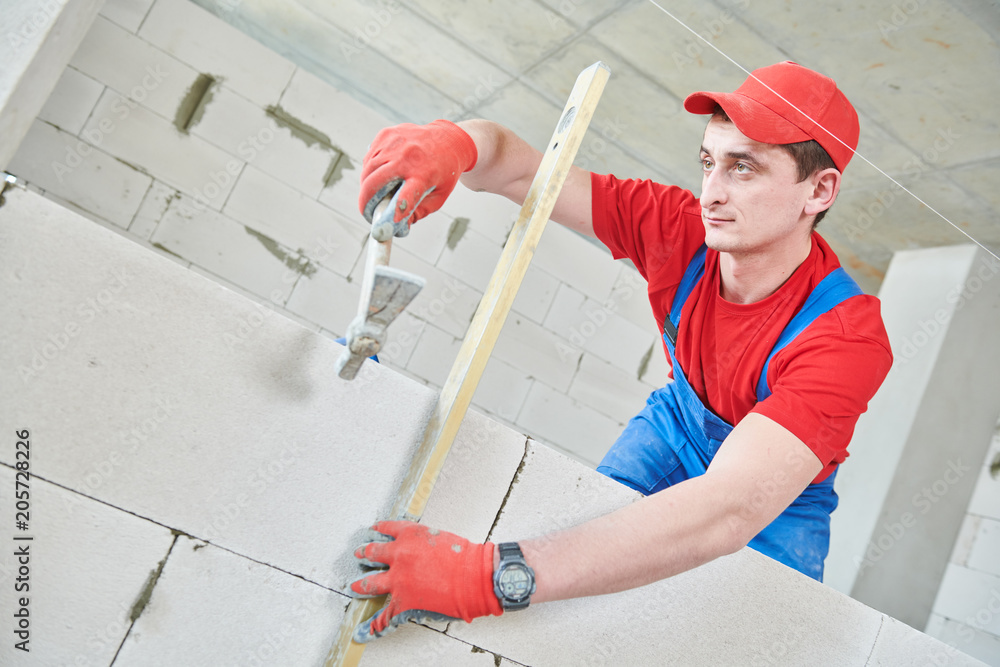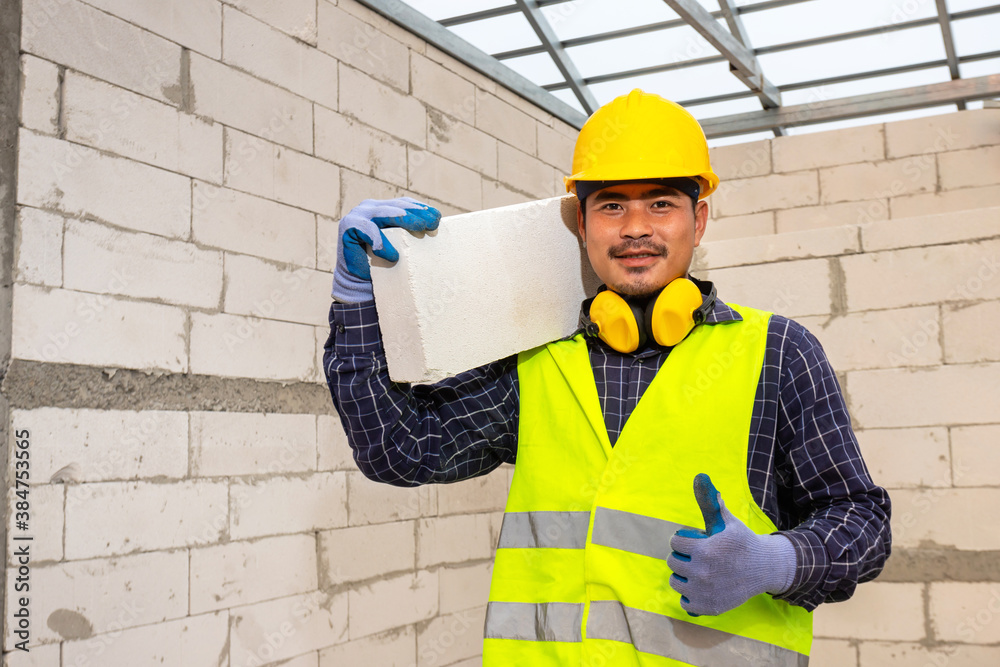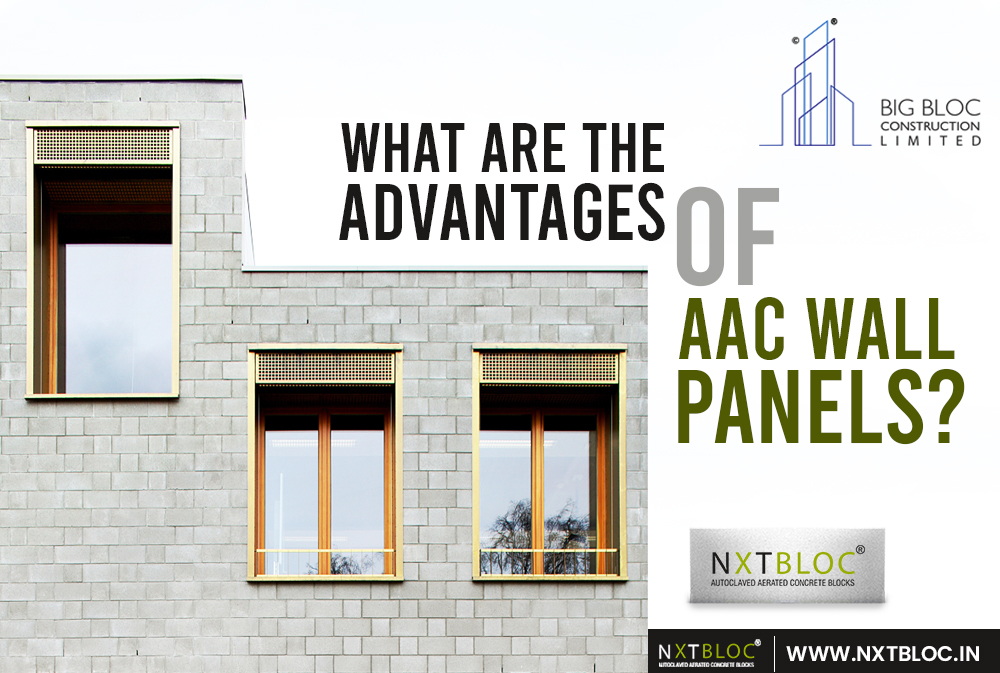When we talk about the modern construction industry, there is a new material that is widely used for its superior properties and cost-effective price. Such materials are AAC wall panels. Produced by the method of high-pressure steam curing, silica sand, cement, and lime are used as the main raw materials to produce a porous concrete forming panel.
AAC blocks are a new construction material that is quickly gaining popularity for their excellent performance, as well as their versatility. AAC blocks are used as a wall material and roofing panel, and their flexibility makes them ideal for use in any kind of construction project.

Here are some advantages of AAC wall panels:
Easy to Use
- AAC (autoclaved aerated concrete) panels are one-fifth the weight of the concrete blocks and are available in a wide range of sizes.
- AAC is lighter and easier to handle than concrete but requires extra care during construction to prevent damage.
- AAC blocks are easier to lay when you have a team of skilled workers.
- Thin-bed mortar has fine tolerances for laying blockwork, but if you’re using lightweight concrete blocks, there is no waste since the offcuts may be used to make walls.
- AAC panels are often used in structures designed to comply with a certain panel size requirement.
Lightweight
- AAC (autoclaved aerated concrete) panels are easier to transport and less expensive than standard concrete panels because they weigh about three to four times as much.
- They are also easier to handle, which allows their use in higher buildings, lowering their cost and permitting a greater number of them to be used in construction.
- The simplicity of lightweight autoclaved aerated concrete (AAC) wall panels means that a single wall can be finished in one day, without the need for any wet field operations.
- As long as the wall’s surface is roughened to less than 3mm, painting can commence directly after installation.

Soundproof
- AAC panelling is lightweight and porous, making it an effective sound barrier.
- It’s often used in the construction of studios, hotels, schools, and healthcare facilities—places where privacy is especially valued.
- The confined air pockets in AAC make it a great sound barrier.
Pest Resistant
- Pests can infect your home’s interior and exterior.
- Infestation of pests is associated with climatic change, especially in the corners of your bathroom, kitchen, or even living room.
- In order to keep pests out and your walls safe, AAC panels should be used in wall building.
- AAC panels are free of termites, rats and insects since they’re made of inorganic material.
- This means AAC panels last longer and it costs less to maintain them.
Fire Resistant
- Although it may sound counterintuitive, the foam-like substance in concrete is foamed with hydrogen.
- That makes AAC (autoclaved aerated concrete) wall panels an excellent insulator, allowing builders and homeowners to enjoy mild winter temperatures and cool summer temperatures.
- This material has been proven to reduce cooling costs by as much as 25% because AAC panels are more energy-efficient during their entire lifespans, they save energy overall.
- AAC, or autoclaved aerated concrete, is a lightweight, high-strength building material made from a mix of concrete and air. It’s fire-resistant for six hours and can withstand 1,200 degrees Celsius, making it important for reasons of fire safety.
- AAC is well suited to hotter climates when cooling is a priority because it has a mild thermal mass—that is, it’s made up of a mix of concrete and air spaces.
Durable
- To keep AAC panels structurally sound, they are outfitted with embedded steel reinforcing.
- The porous nature of AAC makes it vulnerable to water, but with the right planning (damp-proof course layers and proper coating methods), this can be avoided.
- AAC does not decay structurally when exposed to dampness; however, its thermal performance will suffer.
- Acrylic polymer-based coatings are commonly used to waterproof AAC panels.
- They provide good water-repellent qualities when applied correctly.
- Such finishes must be chosen, prepared, and installed according to specific manufacturers’ instructions.
Impermeability
- Autoclaved aerated concrete wall panel (AAC) is a porous material, but it has outstanding impermeability, thanks to its uniform, closed pores produced by special processing that prevents internal faults and micro cracks.
- AAC (autoclaved aerated concrete) panels are a new form of the insulating panel that creates a thermal insulation barrier between the outside and inside of a structure.
- The impermeability of AAC panels is four times greater than regular bricks and two times better than other aerated concrete.
- AAC’s longevity, frost resistance, high softening coefficient, superior surface quality, and lack of cracking make it an attractive building material.
About NXTBloc – AAC Wall Panels Manufacturer
NXTBloc, one of the leading AAC block suppliers and manufacturers, offer a wide range of highly efficient building products. Having a strong network of marketing personnel all around the country, NXTBLOC successfully sells its products at competitive prices owing to its quality products and services.
